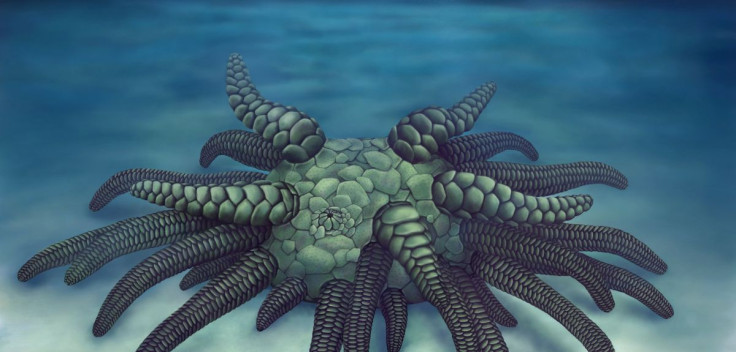Sea Creature With 45 Tentacles Lived 430 Million Years Ago, Resembled Cthulhu

Marine creatures similar to the fictional Cthulhu sea monster created by American author H.P. Lovecraft existed in the ancient past, the fossilized remains of a 430 million-year-old animal from Herefordshire, United Kingdom, proved.
According to a press release about a new article published in the journal Proceedings of the Royal Society B, the creature was named Sollasina cthulhu, as a tribute to the famous author. Paleontologists were able to create an accurate 3-D computer reconstruction of the fossil, which aimed to provide them insights into the early evolution of sea cucumbers, scientifically known as echinoderms – creatures with leathery skin and an elongated body containing a single, branched gonad.
The “virtual fossil” was constructed using hundreds of slice images, taken at stages as experts studied it using a commonly-used method among paleontologists that involved grinding the structure away, one layer at a time. Both the fossil slices as well as 3-D reconstruction are currently housed at Oxford University Museum of Natural History.
The release noted that the fossilized creature was much smaller than the fictional animal imagined by Lovecraft. "Although the fossil is just three cm [1.1 inches] wide, its many long tentacles would have made it appear quite monstrous to other small sea creatures alive at the time. It is thought that these tentacles, or 'tube feet', were used to capture food and crawl over the seafloor,” it said.
While studying the 3-D construction of the fossil, scientists discovered that the creature was equipped with 45 tentacles that supposedly helped it walk on the seafloor. It also possessed an internal ring, which they interpreted as part of the water vascular system – made up of fluid-filled canals used for feeding and movement.
"Sollasina belongs to an extinct group called the ophiocistioids, and this new material provides the first information on the group's internal structures. This includes an inner ring-like form that has never been described in the group before. We interpret this as the first evidence of the soft parts of the water vascular system in ophiocistioids,” Dr. Imran Rahman, deputy head of research at Oxford University Museum of Natural History and the lead author of the study, said.
Co-author Dr. Jeffrey Thompson, a Royal Society Newton international fellow at University College London, added the study of the fossil also helped them make an important discovery – that Sollasina cthulhu and its marine relatives were more closely related to sea cucumbers, contrary to their former belief that the species might be the ancestors of sea urchins.
"We carried out a number of analyses to work out whether Sollasina was more closely related to sea cucumbers or sea urchins. To our surprise, the results suggest it was an ancient sea cucumber. This helps us understand the changes that occurred during the early evolution of the group, which ultimately gave rise to the slug-like forms we see today,” he said.
© Copyright IBTimes 2024. All rights reserved.






















